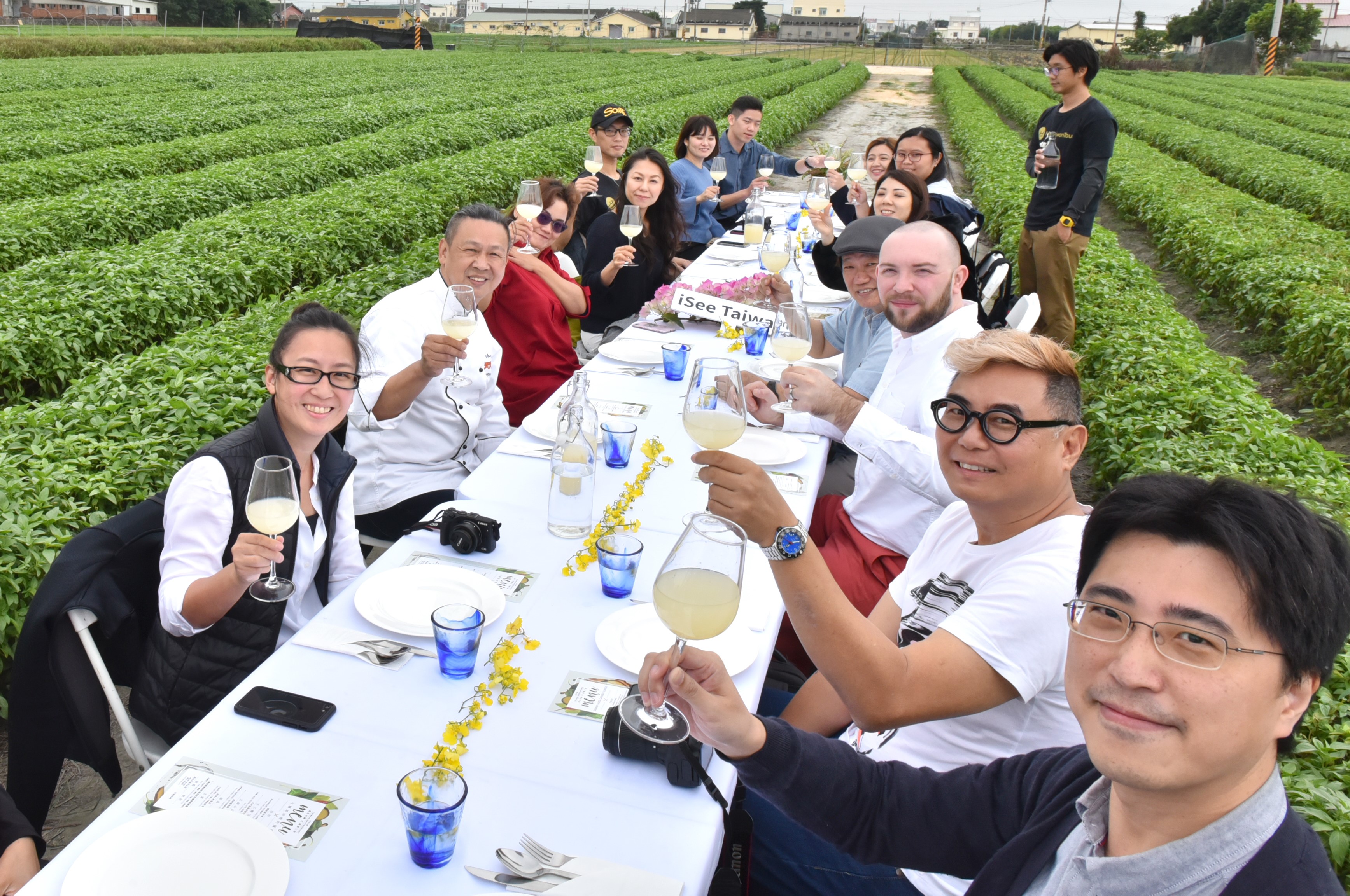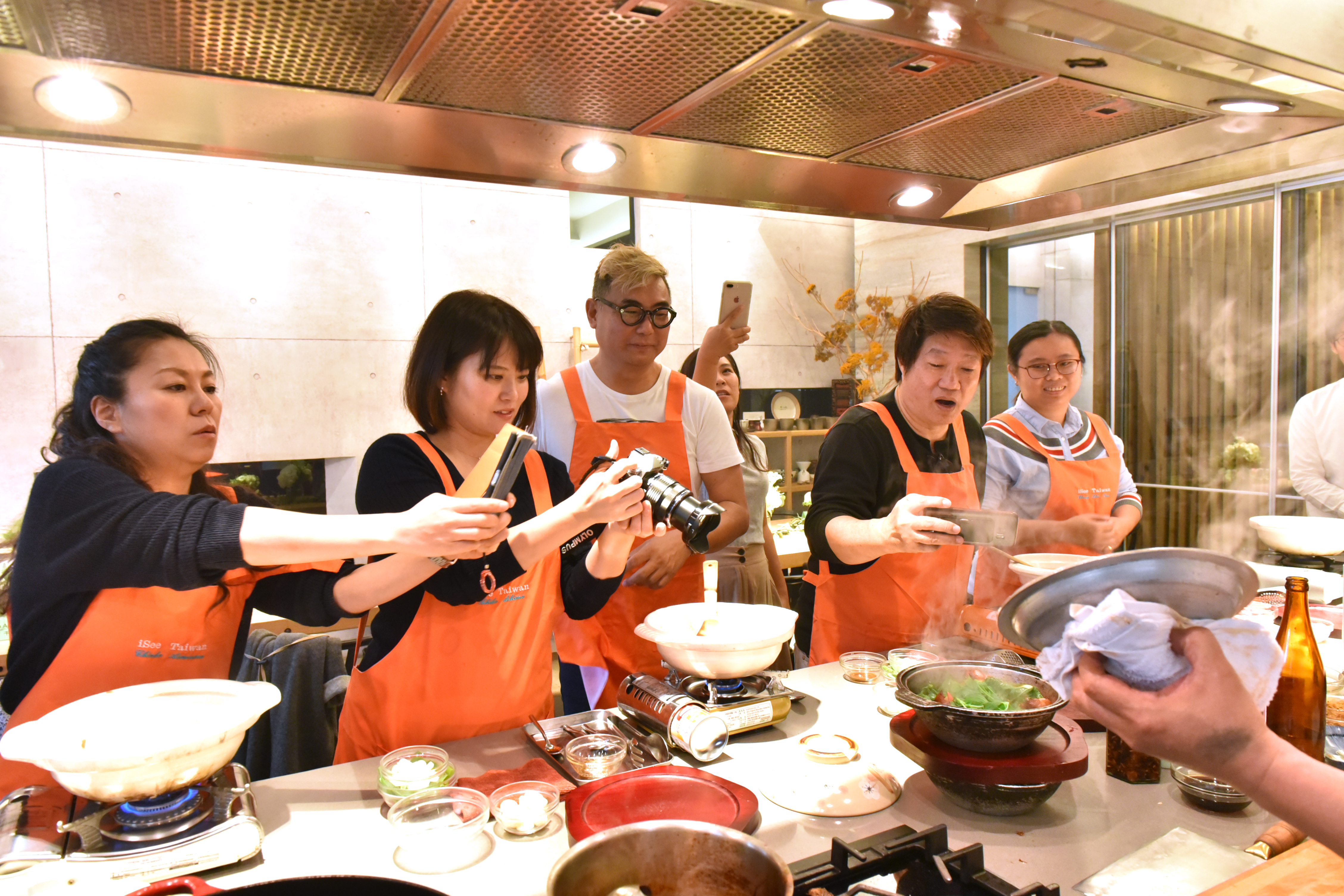Searching for a flavor that can represent Taiwan, the iSee Taiwan Foundation organized an innovative three-day and two-night Taiwan cultural tour in 2018 using the theme of Sanbei Cuisine. From December 11-13, 2018, five food influencers and journalists from Japan, Singapore and Malaysia were invited to Taiwan. It is hoped that their influence can attract more people to enjoy Taiwan's unique food and culture, whilst supporting the development of Taiwan's food and cultural tourism.
- By iSee Taiwan
- Jan. 27 2019
Wasabi brings to mind Japan while curry reminds people of India, but what flavor is associated with Taiwan? Searching for a flavor that can represent Taiwan, the iSee Taiwan Foundation organized an innovative three-day and two-night Taiwan cultural tour in 2018 using the theme of Sanbei Cuisine. From December 11-13, 2018, five food influencers and journalists from Japan, Singapore and Malaysia were invited to Taiwan. It is hoped that their influence can attract more people to enjoy Taiwan’s unique food and culture, whilst supporting the development of Taiwan’s food and cultural tourism.
Originating from the Food for Fun series of activities in 2012, these events have hoped to reveal unique Taiwanese cuisine and spread the beautiful image of Taiwan to all parts of the world. The Food for Fun series was continued with DonAmigo in 2016 and Gastronomy Guabao in 2017. To date, almost 3,000 local food stories have been submitted, and more than 500 local restaurants have been recommended. At the same time, interviews by foreign media have resulted in the series gaining more than 1 million clicks across Asia’s social networking sites.
In 2018, the Foundation highlighted Sanbei as the focus of its culinary discovery program. The event included tracing the origins of Sanbei dishes, collecting modern Sanbei stories from the public, a Sanbei cultural tour whilst inviting foreign foodies and media to Taiwan for the events. From traditional Sanbei, interesting Sanbei, and their own Sanbei, foreign guests worked with a celebrity chef to create their personal perfect Sanbei cuisine. This enabled them to deeply understand Taiwan’s Sanbei cuisine and provide recommendations from their different perspectives.

The tour first took the foodies and food media to traditional Taiwanese restaurants to experience traditional Sanbei, followed by a trip south to Yunlin to explore the manufacturing of the three main ingredients in Sanbei cuisine. The guests also tasted interesting Sanbei innovations at a unique lunch at a Taiwan basil farm. In a wine tasting styled event, the foodies and media sampled soy sauce in a century old soy sauce distillery. The evening’s dinner was a showcase of creative Sanbei dishes based on local Taiwanese ingredients and cooked in an Italian restaurant. Sanbei cuisine was deconstructed and re-interpreted, with elements of Sanbei cooking. Although no traditional Sanbei materialized, the flavors were definitely Sanbei, showing the guests that the fusion of oriental and western cooking could be so harmonious and wonderful. At the end of the tour, Chef A-fa (Shi, Jian-fa) demonstrated Sanbei cooking so that the international guests could return home with fond memories of Taiwan’s unique flavors and promote them to the world.

The Cultural Salon on the itinerary promoted exchanges among Taiwanese foodies, chefs, and foreign media to discuss the development of Sanbei. KF Seetoh, world-renowned Singaporean influencer and CNN contributor, food guide author and TV host, suggested that young people should be creative and make new Sanbei dishes such as Sanbei burgers and Sanbei fried chicken to attract global attention. David Yip, Singaporean food Journalist/Author and Chef suggested investing emotion into food to promote the cuisine to the world via storytelling. Japanese food writer Chieko Asazuma suggested making Sanbei into ready-to-eat pouches to make them easily available to everyone to facilitate international popularity.

During the Food for Fun X Sanbei Senses Cooking event, the iSee Taiwan Foundation was well recognized and supported by businesses such as the century old Wuan Chuang Soy Sauce, which brewed soy sauce using ancient methods. Nice Garden, which emphasizes humane pig farming with 30 years of experience in animal nutrition and Rice House, which produces Fu Rice, the best rice in Taiwan. Together with the iSee Taiwan Foundation they promoted Taiwan’s food tourism and jointly showed international food influencers and media the energy of Taiwan’s food culture. It is hoped that with these efforts will attract more foreigners to experience Taiwan and Taiwan’s vibrant food scene.

iSee Sanbei Cooking
Tracing the source is the first step to understand the heritage behind a food culture. The iSee Taiwan Foundation especially invited cultural, food, history and culinary experts to explore the meaning of Sanbei cuisine. The Foundation discovered that the earliest Sanbei came from Jiangxi and later spread to other places with the migration of local Hakka. In addition to Hakka immigrants in Taiwan, Sanbei cooking could also have been introduced to southern Taiwan by Jiangxi veterans in the 1950s. This cuisine began to spread across Taiwan because it was so delicious. In the 1960s, Taiwan’s emerging restaurants introduced Sanbei Chicken onto their menus, turning it into a well-known dish.
On January 17, 1961, Taiwan’s Credit News (the predecessor of the China Times) published an article introducing Sanbei Chicken. With the subsequent popularity of free range chicken eating houses and beer houses, Sanbei Chicken gained even greater popularity, rendering it a “national cuisine”. However, the Jiangxi Sanbei Chicken which originally used rice wine, soy sauce and lard later evolved. With the use of rice wine, soy sauce and sesame oil, and the addition of Taiwan basil, Taiwanese Sanbei was created. Moreover, other Sanbei dishes such as Sanbei oyster mushroom, Sanbei squid, Sanbei sandwiches, Sanbei pizza and even Sanbei instant noodles were developed, testifying to the extent of the Taiwanese love for Sanbei.

